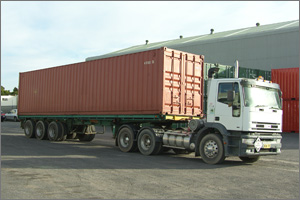How to Get a Shipping Container Delivered
Obtaining a shipping container delivery is a straightforward process when you choose Port Shipping Containers. The standardized container sizes make it seamless to transfer them from the depot to a truck or ship and then to your intended location, be it a worksite or your home.
The methods of shipping container delivery we employ depend on the container size and the destination site. Here are the transportation options at your disposal:



